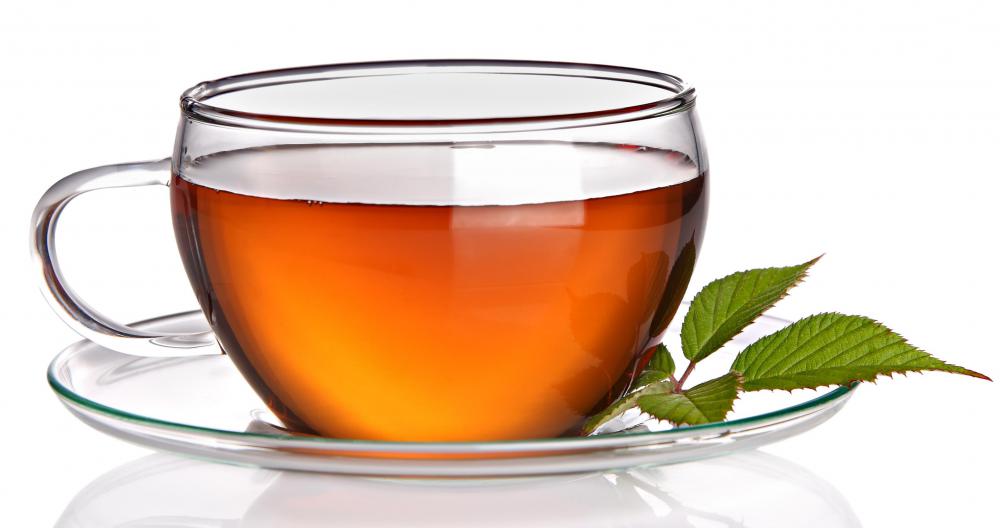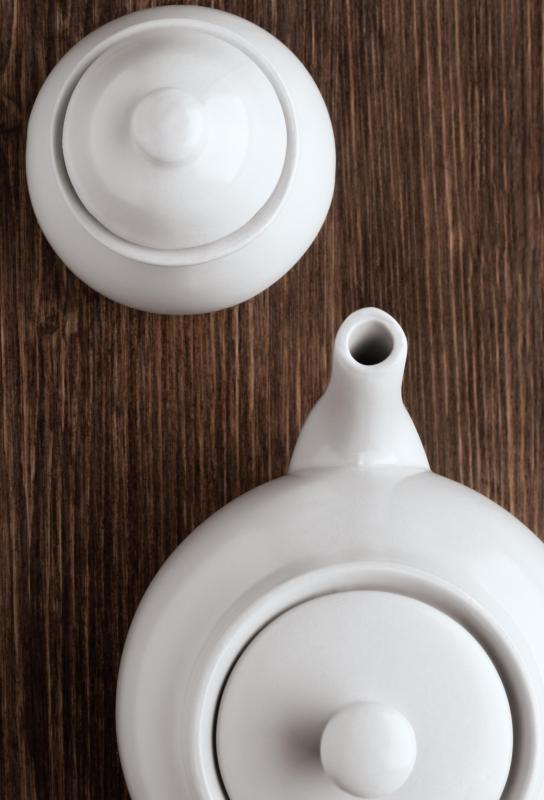At DelightedCooking, we're committed to delivering accurate, trustworthy information. Our expert-authored content is rigorously fact-checked and sourced from credible authorities. Discover how we uphold the highest standards in providing you with reliable knowledge.
Is There Really Fluoride in Tea?
There is indeed fluoride in tea, with green tea having the highest fluoride amounts, as a general rule. The presence of fluoride in tea is caused by the tendency of tea plants to bioaccumulate, meaning that they uptake a wide variety of materials from the environment around them and then store these materials. In areas where there is a great deal of fluoride pollution, tea plants will accumulate fluoride, and when the leaves of these plants are brewed, they will release the soluble fluoride inside. When tea is brewed with fluoridated water, obviously the amount of dissolved fluoride increases even more.
Several studies have been conducted on fluoride in tea, with most studies concluding that the amount of fluoride in tea is on the rise, due to increased industrial pollution, which contaminates the air, water, and soil. The older a tea plant is, the more fluoride it tends to amass, with younger, more tender tea plants containing less fluoride simply because they have had less time to accumulate it. In some cases, four cups of tea can contain a third of the recommended daily fluoride intake before accounting for other sources of fluoride, like water and dental care products.

Fluoride is a chemical which has been shown to be beneficial in preventing cavities. In the 20th century, numerous communities started fluoridating their water and recommending the therapeutic use of fluoride to prevent cavities, and a general decline in tooth decay has been noted in areas with consistent fluoridation, especially in people who take care of their teeth. Fluoride is also generated as a byproduct in many industrial processes, which explains how it enters tea plants.

Excessive consumption of fluoride can cause a conditions known as fluorosis, which causes the teeth and bones to become discolored and brittle. Some studies also suggest that high levels of fluoride consumption may also elevate the risk of certain cancers, making fluoride in tea a concern for people who want to look out for their health, especially since teas like green tea are often recommended for cancer prevention.

The amount of fluoride in tea, for the time being, is only a major issue to concern to people who drink a high volume of concentrated tea every day, or to people who live in areas with heavily fluoridated water. Several cases of fluorosis have been linked with high tea consumption in Asia, where some water is naturally fluoridated due to the dissolved minerals it contains.
AS FEATURED ON:
AS FEATURED ON:













Discussion Comments
Many people believe public water is fluoridated to make people drowsy, much like bromide. This should be stopped as there is little evidence for its supporters' claims.
This is a refreshingly balanced article about tea and fluoride, without the scaremongering and bias usually seen. I have been drinking about six mugs of black tea a day for many years, being from the UK, where tea is the national beverage. I have no apparent health problems. However, I would like to keep my fluoride intake well within safety limits.
The USA gives an Upper Tolerable Limit for fluoride of 10mg/day. Luckily, I live in an area in the UK where the water is not fluoridated. Most foods are low in fluoride and tea consumption is liable to be my most significant intake. A study is referenced below on the amounts of fluoride in various types of brewed tea from different countries. It shows that regular black and green tea brewed for five minutes have around 1.5ppm or mg/Liter, with green tea a bit lower than black if anything. At 1.5 liters per day, my consumption of fluoride would be about 2.25 mg. The USA gives the Upper Tolerable Limit as 10mg/day so, despite drinking lots of black tea, I appear to be within safe limits. The study also found that "brick tea" had by far the highest levels of fluoride at over 7mg/Liter. This would put me over the limit. Brick tea is made from old, mature and dried fallen leaves and is a very cheap, poor quality tea. It would not normally be exported. This figure of 7 mg/Kg is often quoted to scare people, without mentioning the type of tea. To be on the safe side, it would be best only to drink high quality teas made from the young leaf tips and buds, such as "tippy assam" etc. The cheaper teas will no doubt have more of the cheaper old leaves and more fluoride.
A side point, fish bones have high levels of fluoride and I often eat canned sardines with the bones. This I will now stop doing!
See the reference where tables are free to access from Science Direct: Environmental Pollution
Volume 104, Issue 2, 1 February 1999, Pages 197–205; “Fluoride contents in tea and soil from tea plantations and the release of fluoride into tea liquor during infusion,” by K.F Fung, Z.Q Zhang1, J.W.C Wong, M.H Wong
No matter how hard you try to avoid fluoride, it still finds you.
Post your comments